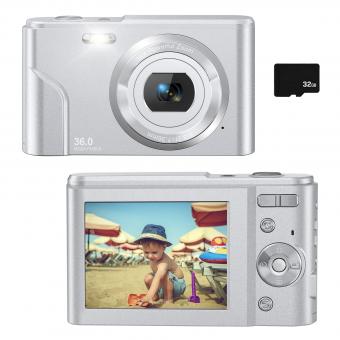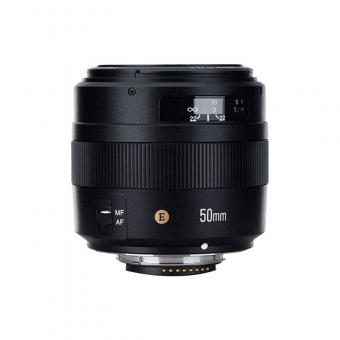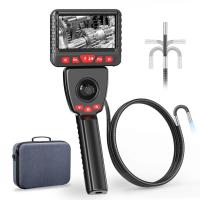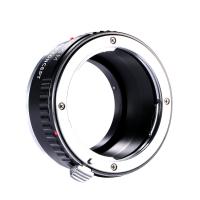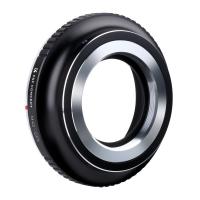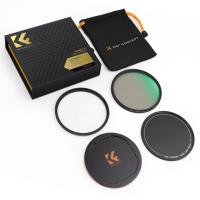What Year Did The Digital Camera Come Out?
The first digital camera was invented in 1975 by Steven Sasson at Eastman Kodak.
1、 Invention of the Digital Camera
The digital camera was invented in 1975 by Steven Sasson, an engineer at Eastman Kodak. He created the first digital camera using a CCD image sensor and a cassette tape to store the images. This invention marked a significant milestone in the history of photography, as it paved the way for the eventual transition from film to digital photography.
The digital camera revolutionized the way we capture, store, and share images. It eliminated the need for film processing and allowed for instant viewing of photos. Over the years, digital cameras have evolved rapidly, with improvements in image quality, resolution, and features. Today, digital cameras are ubiquitous, with a wide range of options available to consumers, from compact point-and-shoot cameras to advanced DSLRs and mirrorless cameras.
The invention of the digital camera has had a profound impact on photography, enabling photographers to experiment with new techniques and styles. It has also democratized photography, making it more accessible to a wider audience. With the rise of social media and digital platforms, the digital camera has become an essential tool for capturing and sharing moments.
As for the latest point of view, the digital camera continues to evolve, with advancements in sensor technology, image processing, and connectivity. The integration of artificial intelligence and machine learning has also led to improvements in autofocus, image stabilization, and scene recognition. Additionally, smartphone cameras have become increasingly sophisticated, blurring the lines between traditional digital cameras and mobile devices. Overall, the digital camera remains an essential tool for capturing and preserving memories in the digital age.
2、 Evolution of Digital Camera Technology
The digital camera was first introduced in 1975 by Kodak engineer Steven Sasson. This early prototype was a far cry from the compact, high-resolution digital cameras we are familiar with today. It weighed 8 pounds and captured black-and-white images at a resolution of 0.01 megapixels. Despite its limitations, this invention marked the beginning of a revolution in photography.
Over the years, digital camera technology has advanced rapidly. The 1990s saw the introduction of consumer-friendly digital cameras, which gradually replaced film cameras as the primary tool for capturing images. These early digital cameras offered low-resolution images and limited storage capacity, but they laid the groundwork for the development of more sophisticated models.
In the early 2000s, digital cameras began to incorporate higher-resolution sensors, improved image processing capabilities, and expanded storage options. This led to a significant increase in image quality and the ability to capture more detailed and vibrant photographs. Additionally, advancements in connectivity allowed for easier sharing and transferring of images, further enhancing the appeal of digital photography.
Today, digital cameras continue to evolve, with manufacturers focusing on improving sensor technology, enhancing autofocus systems, and incorporating advanced features such as 4K video recording and wireless connectivity. The latest digital cameras offer unparalleled image quality, versatility, and convenience, making them indispensable tools for both amateur and professional photographers.
As for the specific year of the digital camera's release, it was 1975 when the first digital camera was developed by Kodak engineer Steven Sasson. This groundbreaking invention laid the foundation for the digital cameras we use today, and its impact on the world of photography continues to be felt.
3、 Impact of Digital Cameras on Photography
The digital camera was first introduced in 1975 by Kodak, but it wasn't until the 1990s that digital cameras became more widely available to consumers. The impact of digital cameras on photography has been profound, revolutionizing the way we capture, store, and share images.
One of the most significant impacts of digital cameras on photography is the democratization of the art form. With the advent of digital photography, anyone with a digital camera or smartphone can become a photographer, leading to a proliferation of images and a more diverse range of perspectives being shared. This has led to a democratization of photography, allowing more people to express themselves through visual storytelling.
Furthermore, digital cameras have also transformed the way we consume and share photographs. The rise of social media platforms and photo-sharing websites has made it easier than ever to share and view images, leading to a more connected global community of photographers and enthusiasts.
In recent years, the advancement of digital camera technology has led to improvements in image quality, low-light performance, and the ability to capture high-resolution images and videos. Additionally, the integration of digital cameras with smartphone technology has further expanded the accessibility and convenience of photography.
Overall, the impact of digital cameras on photography has been transformative, leading to a more inclusive and connected photographic community, as well as advancements in technology that continue to shape the way we capture and share images.
4、 Advancements in Digital Camera Sensors
The digital camera was first invented and developed in the 1970s, with the first commercially available digital camera, the Dycam Model 1, being released in 1990. However, it wasn't until the late 1990s and early 2000s that digital cameras started to gain widespread popularity and began to replace traditional film cameras.
Advancements in digital camera sensors have been a key factor in the evolution of digital photography. Over the years, sensor technology has improved significantly, leading to higher resolution, better low-light performance, and increased dynamic range. The development of CMOS (complementary metal-oxide-semiconductor) sensors has been particularly influential, allowing for smaller, more power-efficient, and higher-performing sensors.
In recent years, there has been a focus on improving the sensitivity and noise performance of digital camera sensors, as well as increasing the dynamic range and color accuracy. Additionally, advancements in sensor design and manufacturing processes have led to the development of sensors with larger pixel sizes, which can capture more light and produce higher-quality images, especially in low-light conditions.
Furthermore, the integration of advanced signal processing algorithms and machine learning techniques has enabled digital cameras to produce more detailed and natural-looking images, even in challenging shooting conditions.
Looking ahead, the future of digital camera sensors is likely to involve continued improvements in sensitivity, dynamic range, and color accuracy, as well as the integration of new technologies such as computational photography and 3D sensing. These advancements will further enhance the capabilities of digital cameras and continue to drive innovation in the field of photography.










